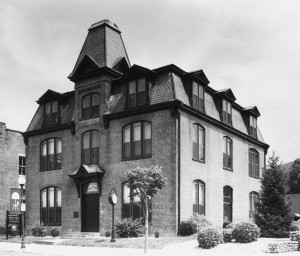What does ADA compliant mean for a building built before the rules were enacted?
Many people are under the impression that the Americans with Disabilities Act applies primarily to new construction, and that buildings existing before 1990 are exempt from compliance or “grandfathered in”.
This is a mistake. An addition or alteration to an existing building triggers a legal responsibility to bring the building into compliance. All parties to the project can be held responsible, including the contractors and building owner(s).

What does ADA compliant mean, by the rules?
ADA Section 202 reads as follows:
202.1 General. Additions and alterations to existing buildings or facilities shall comply with 202.
202.2 Additions. Each addition to an existing building or facility shall comply with the requirements for new construction. Each addition that affects or could affect the usability of or access to an area containing a primary function shall comply with 202.4.
202.3 Alterations. Where existing elements or spaces are altered, each altered element or space shall comply with the applicable requirements of Chapter 2.
202.3.1 Prohibited Reduction in Access. An alteration that decreases or has the effect of decreasing the accessibility of a building or facility below the requirements for new construction at the time of the alteration is prohibited.
202.3.2 Extent of Application. An alteration of an existing element, space, or area of a building or facility shall not impose a requirement for accessibility greater than required for new construction.
202.4 Alterations Affecting Primary Function Areas. In addition to the requirements of 202.3, an alteration that affects or could affect the usability of or access to an area containing a primary function shall be made so as to ensure that, to the maximum extent feasible, the path of travel to the altered area, including the rest rooms, telephones, and drinking fountains serving the altered area, are readily accessible to and usable by individuals with disabilities, unless such alterations are disproportionate to the overall alterations in terms of cost and scope as determined under criteria established by the Attorney General.
SafePath Products manufactures an innovative line of handicap ramps, wheelchair landings, floor reducers, transitions, and barrier removal products designed to make ADA compliance “feasible” when older buildings are remodeled. Please visit our informative website or call 800-497-4003 for information about products, pricing, and dealer locations.